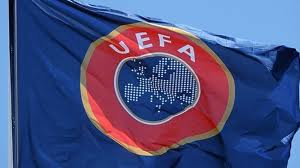By Paul Nicholson
January 12 – UEFA has released its latest club benchmarking report – an impressive and exhaustive (and exhausting) analysis via a range of indicators of the health and current position of European club football.
The headline that screams from the analysis – and is emphasised in new UEFA president Aleksander Ceferin’s foreword – is that the introduction of Financial Fair Play (FFP) has turned club losses of €700 million in the two years prior to the introduction of FFP, to profits of €1.5 billion in the past two years.
Two other key financial indicators – aggregate losses and net debt – also show a remarkable turnaround in the numbers. Aggregate losses have dropped by 81% from €1.7 billion in 2011 to just over €300 million in 2015. Net debt as a percentage of revenue has fallen from 65% in 2009 to 40% in 2015.
“The success story of football as a cultural and commercial force stands out once more. It shows that UEFA’s regulatory role in Financial Fair Play has not only steadied the ship of European finance, but also provided the framework for unprecedented growth, investment and profitability,” says Ceferin.
Of course this ignores the more philosophical argument that the real effect of FFP has been to concrete Europe’s biggest clubs into unbreakable positions at the top of the continent’s club game – a financial reinforcement and equivalent of creating an (almost) closed league. But that is an argument for another day. The figures in this report mark a triumph and have created an attractive, protective and welcoming environment for investors in football.
The evidence that FFP has created an appetite and favourable conditions for inward investment can be seen in highlights from the report including:
- 48% of major global stadium projects have been in Europe
- 58 new club stadium projects were scheduled between 2013 and 2017 compared to 23 between 2008 and 2012
- 44 clubs are under foreign ownership by 18 different nationalities
- more than have the clubs in England top two divisions are foreign owned
- 2016 was the most active for foreign takeovers with 10, eight of them by Chinese investors
- 25% of stadia in the top European leagues have commercial naming rights deals
- European club revenue is six times the 1996 level, averaging 9% growth each year
The figures point to an overall good football health across Europe, but at the same time drag you back to the observation that some under FFP have become much heathier than others.
The top 15 European clubs added €1.5 billion in sponsorship revenue since 2009, while the other 700 only managed an additional €500 million.
The commercial pulling power of the English Premier League was once again recognised with the simple stat that its total wage bill is more than double the next highest paying league, Italy’s Serie A.
The knock-on effect of this is that 70% of the players in the English Premier League are expats. But across Europe an average wage bill of 63% against total club revenue indicates a business just about under control. This figure was slightly higher than the previous year but the report says is lower than all previous years.
So what about fans? It seems they are pretty happy with what they are getting. 170 million people watched European leagues in 2015/16 (55 million of them in England and Germany). That is an increase of 2.6 million, with 10 leagues reporting their best attendances for more than 10 years.
One interesting stat was the impact of promotion and relegation on spectator levels. UEFA examined 4,900 season-to-season results and found that each step up or step down a league only results in a 3% gain or loss in attendance.
The only conclusion that can be drawn from this report is that European football product is strong, engenders loyalty, has a strong measure of stability, and has more growth capacity left in the system.
Contact the writer of this story at moc.l1743810379labto1743810379ofdlr1743810379owedi1743810379sni@n1743810379osloh1743810379cin.l1743810379uap1743810379
